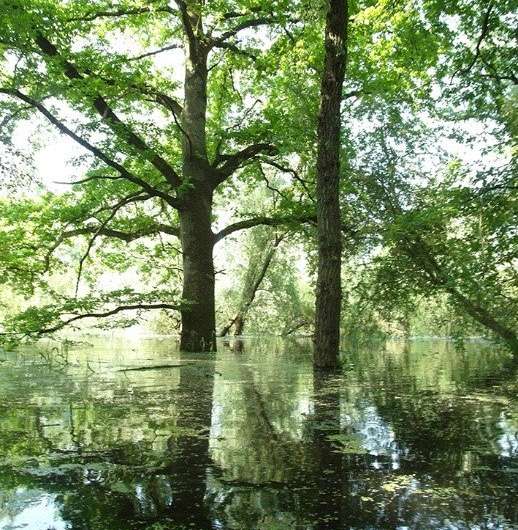Higher biodiversity due to river-expanding measures

Lower flood risk and the start of biodiversity recovery - those two things can go together quite well. Multiple groups of endangered and protected species are returning to river areas in the Netherlands, reveal researchers of Utrecht University and Radboud University today in Science Advances.
Let's start with the bad news: the Netherlands has lost more plant and animal species than the rest of Europe in the past centuries, while Europe has in turn lost more species on average than the rest of the world.
Yes, the water quality has already improved in recent decades and this has had a positive effect on the presence of species. But new threats to biodiversity have also emerged, such as the use of pesticides that threaten insects and therefore also birds.
Biodiversity is very important for preventing pests, enabling agriculture and horticulture, and maintaining globally connected food chains on land, in rivers and in oceans.
'Space for the river': positive effect on biodiversity
The government project 'Space for the River' (Ruimte voor de Rivier) was a reaction to the high tides of 1993 and 1995. The main objective was better flood protection, but the measures were also expected to improve spatial quality and enable nature recovery.
The effect on the water levels was already known. Researchers at Utrecht University and Radboud University analysed the effects on the biodiversity of seven groups of species (plants, birds, mammals, reptiles and amphibians, fish, dragonflies and butterflies).
Geoscientists and ecologists charted the development of the biodiversity of endangered and protected species on the basis of a series of four landscape-ecological maps between 1997 and 2012, as well as more than two million flora and fauna observations by citizens. More than three quarters of the studied floodplains spread across the Rhine, Nederrijn, Waal and IJssel showed an increase in biodiversity. This mainly concerns species that can spread quickly. Birds and mammals showed the greatest increase.
Floodplains where various measures were implemented, such as the creation of subsidiary channels, the natural management of grasslands and allowing natural vegetation to develop, showed a significant improvement compared to floodplains where these measures were not implemented.
Not all plant and animal species were able to benefit from these measures, however. Plants, butterflies and dragonflies that spread slowly had a suitable living environment, but were nevertheless unable to sufficiently spread due to the fragmentation of nature areas, pesticides and the short period since the measures were implemented.
Reason to hope, but no victory yet
Due to the chosen path of high-tide safety combined with nature recovery, there is reason to hope. Nevertheless, many characteristic species have not returned. Preventing the fragmentation of nature areas and providing a habitat for specific groups of species is crucial for their return.
In order to determine causal links between interventions and biodiversity, high demands are also placed on monitoring species and a national overview of changes to the management and quality of floodplains. Central databases of field observations made by volunteers, such as the National Database of Flora and Fauna, are indispensable for research on large temporal and spatial scales.
More information: Menno W. Straatsma et al. Biodiversity recovery following delta-wide measures for flood risk reduction, Science Advances (2017). DOI: 10.1126/sciadv.1602762
See a visual tour of this research and access the biodiversity scores per floodplain: arcg.is/Tu0mT
Journal information: Science Advances
Provided by Radboud University


















